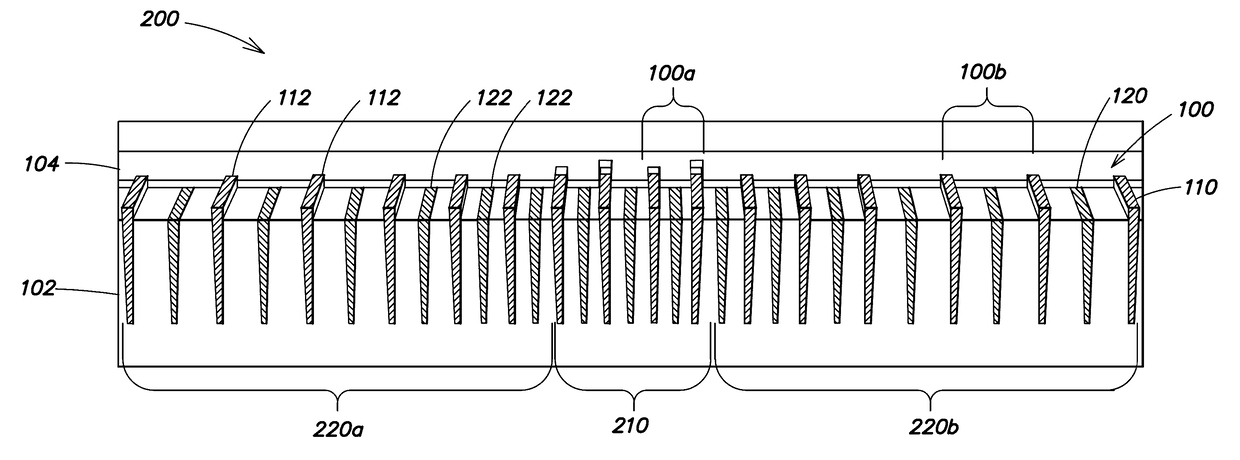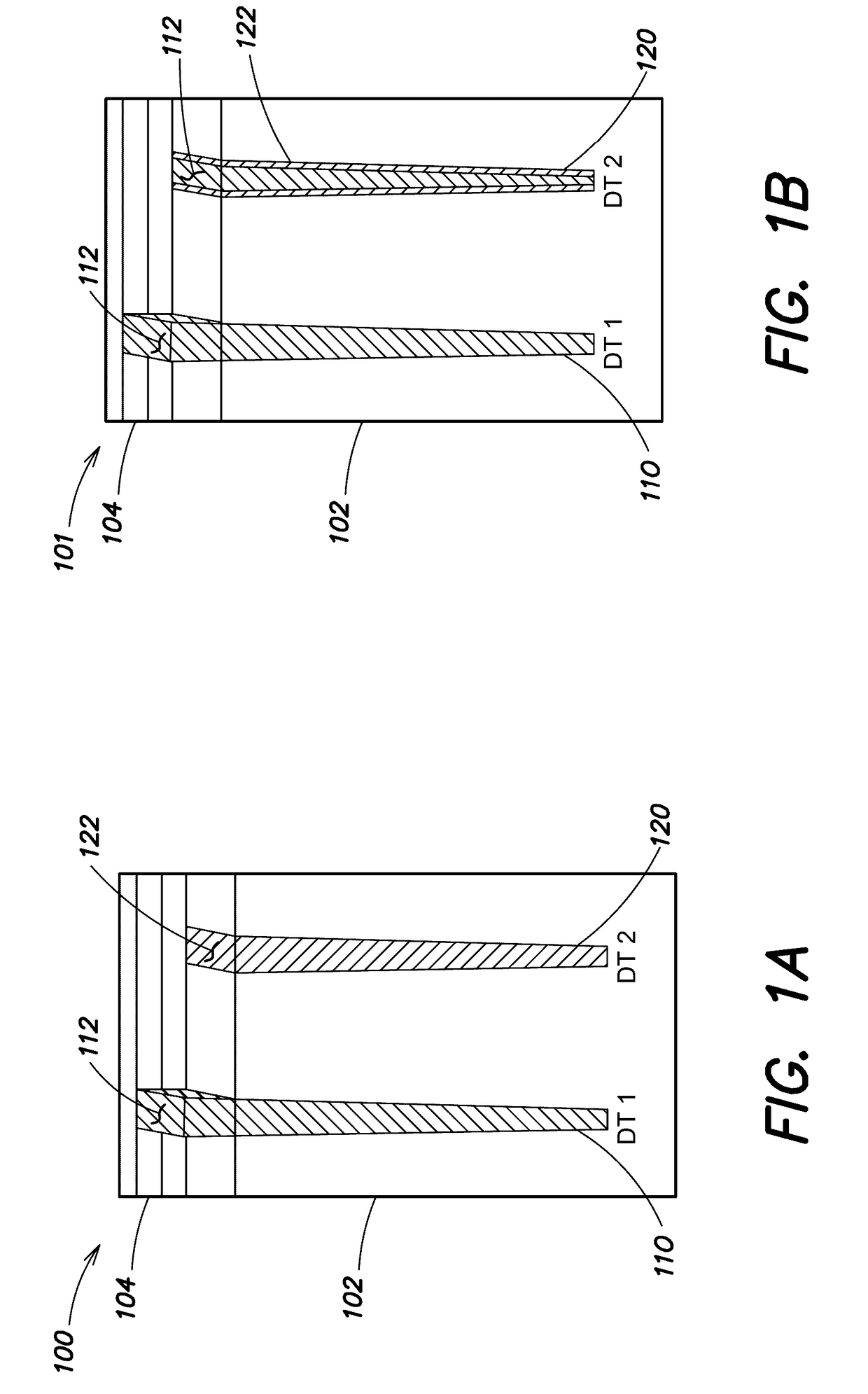Dual trench deep trench based unreleased MEMS resonators
- Summary
- Abstract
- Description
- Claims
- Application Information
AI Technical Summary
Benefits of technology
Problems solved by technology
Method used
Image
Examples
Embodiment Construction
[0046]A dual-trench deep-trench (DTDT) resonator has a unit cell that includes two deep trenches (DTs): a first DT for electrical transduction and a second DT that modulates the mechanical bandgap size, which in turn determines the DTDT resonator's resonance frequency and the band over which the DTDT resonator transmits and / or reflects acoustic waves. The second DT may have a size and filling selected to define a mechanical bandgap that is small enough to provide low reflectivity and trap acoustic waves, yet large enough not to be affected by process variations or to cause cavity matching problems. For example, by partially filling the second DT of a DT unit cell with oxide, the mechanical bandgap can be tuned to just the right size to support a high Q mode, and at the same time be large enough not to be eliminated due to process variations. The use of two DTs per unit cell enables a greater range of mechanical bandgap sizes without breaking the translational symmetry that leads to ...
PUM
 Login to View More
Login to View More Abstract
Description
Claims
Application Information
 Login to View More
Login to View More - R&D
- Intellectual Property
- Life Sciences
- Materials
- Tech Scout
- Unparalleled Data Quality
- Higher Quality Content
- 60% Fewer Hallucinations
Browse by: Latest US Patents, China's latest patents, Technical Efficacy Thesaurus, Application Domain, Technology Topic, Popular Technical Reports.
© 2025 PatSnap. All rights reserved.Legal|Privacy policy|Modern Slavery Act Transparency Statement|Sitemap|About US| Contact US: help@patsnap.com



